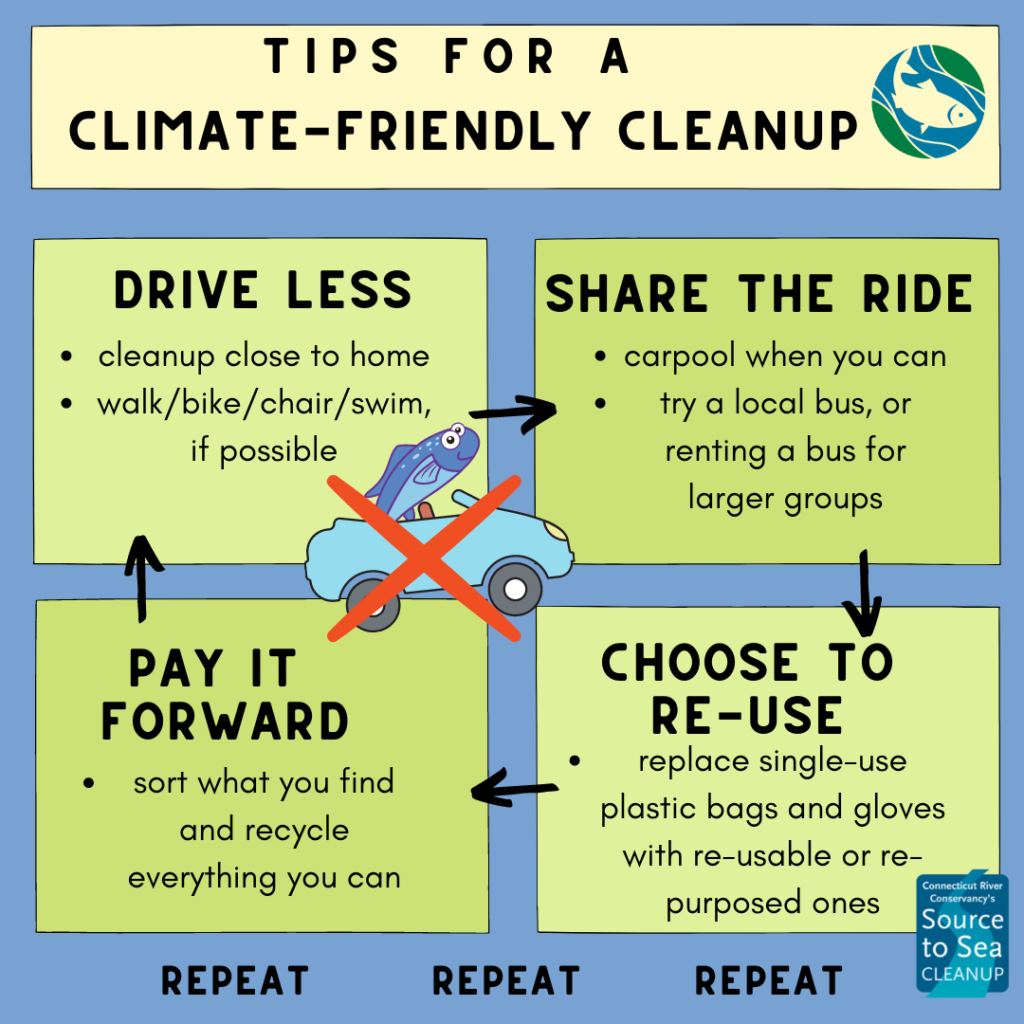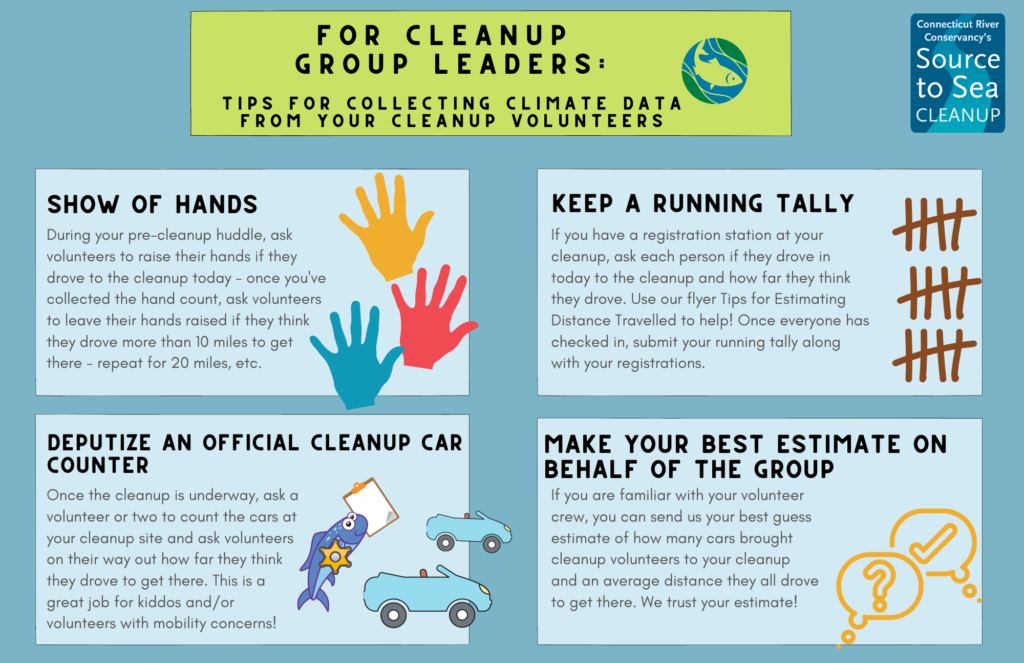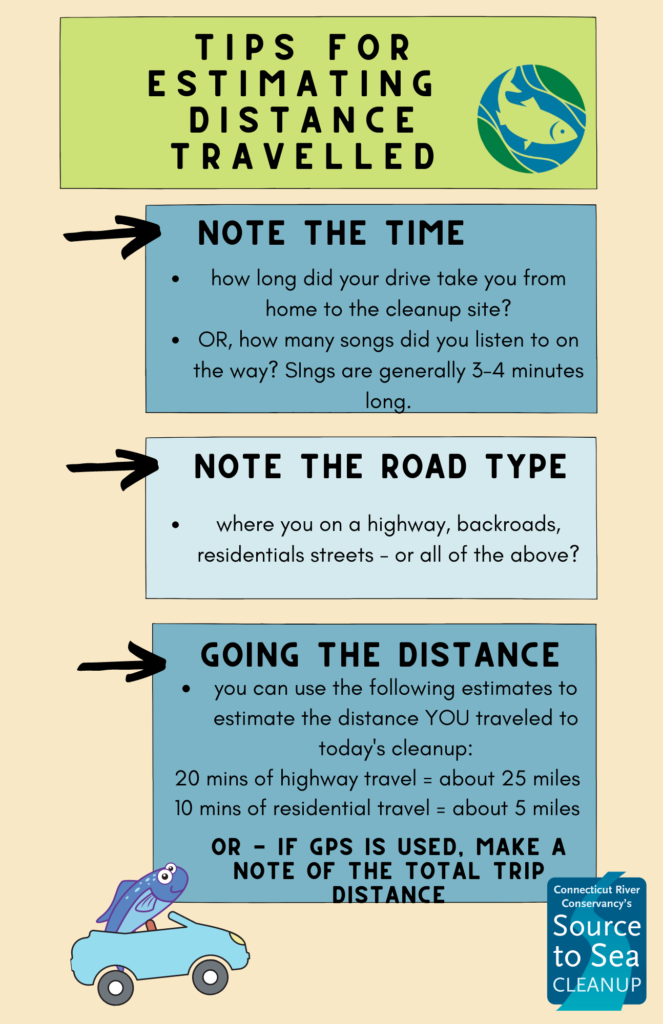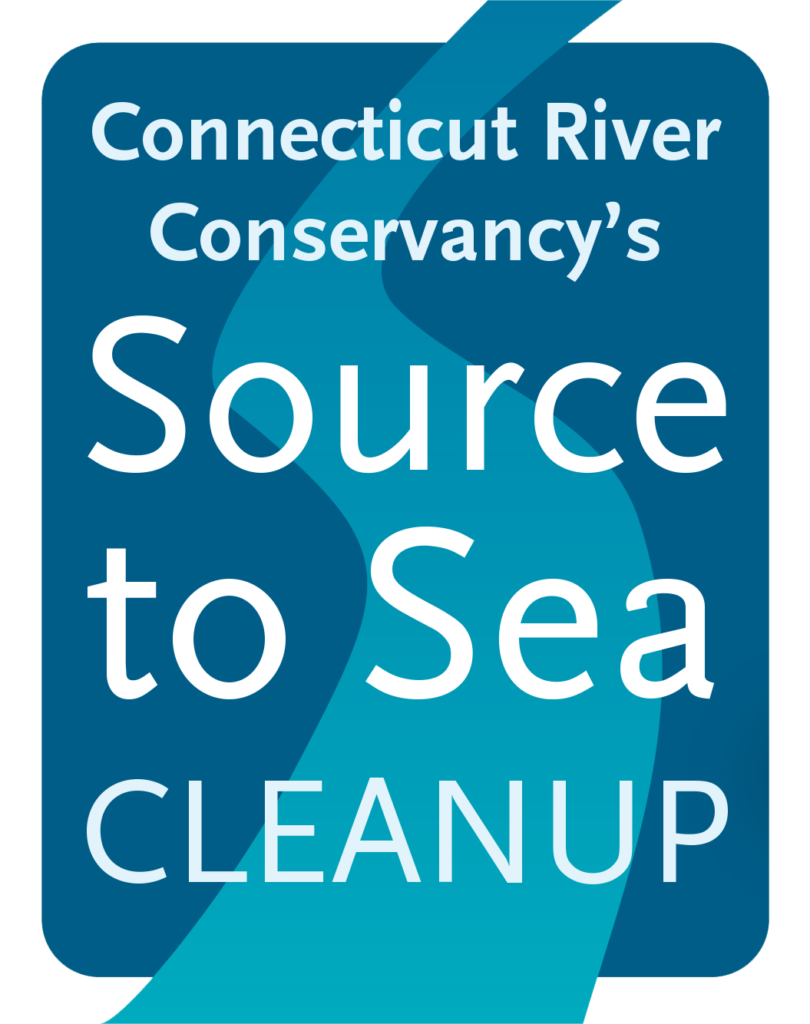Climate-Friendly Cleanup Toolkit
As climate change continues to impact the way our local environment exists and works, we think it’s really important to help each other develop a sense of “carbon consciousness” – an awareness of how our actions impact the amount of carbon being emitted (or, entering) the atmosphere, and how that connects us to the changing climate. Almost every decision we make has a carbon emission that goes along with it and understanding our options to reduce our carbon footprint – the total carbon emissions we contribute to over time – on a personal level can make all the difference. The Connecticut River Conservancy has begun to incorporate this way of thinking into how we do everything that we do by working to calculate and track our collective carbon footprint. This work will allow us to track our progress towards reducing the carbon footprint of our activities, protecting the Connecticut River and its surrounding communities along the way.
Over the past year, the Connecticut River Conservancy has taken steps to better understand our carbon emissions and how we can reduce them. Our Annual Source to Sea Cleanup plays a significant role in our annual carbon footprint, so keeping track of emissions related to the event is essential. We need your help to accomplish this! The transportation of our volunteers to and from their cleanup sites results in the bulk of Source to Sea cleanup-related carbon emissions. In order to calculate the carbon footprint of our annual cleanup, we need to attempt the difficult task of estimating how far volunteers are travelling and in how many vehicles. While we will be working this into our cleanup in future years, this year – we ask cleanup group leaders and volunteers to take a moment to count how many cars transported volunteers to your cleanup this year, and be mindful of how far you all travelled to be there.
The materials used in our cleanups and how the trash we collect get disposed of is also a significant contributor to the carbon footprint of the Source to Sea cleanup. We know that manufacturing plastic goods, especially ones designed for single-use, emit a lot of carbon and create a lot of problems for the environment – not to mention how much we hate to see them wind up back in the environment as litter. Recycling materials and using recycled or re-purposed things greatly reduce the carbon-emission-heavy processes it takes to extract raw materials and make new products.
We encourage all of our Source to Sea volunteers to consider limiting the transportation footprint of their cleanup and taking other steps for a climate-friendly cleanup!

Tips for a Climate-Friendly cleanup:
- Choose cleanup sites that are close to where you live
- If possible, walk or bike to your cleanup site
- Check local bus systems for public transportation options
- Carpool with friends and family when vehicle travel is necessary
- Explore school bus rental options if your group has enough volunteers
- Replace plastic trash bags with re-purposed or compostable bags (we find that local breweries and farm animal feed stores are usually really happy to offer used grain bags for our cleanups!)
- Replace single-use plastic gloves with reusable gloves
- Sort what you collect and recycle everything you can
For Cleanup Group Leaders:
Collecting Climate Data at Your Source to Sea Cleanup
What Info is Needed

Tips for Collecting Climate Data at YOUR Cleanup

Estimating Distance Travelled


Printable Toolkit
